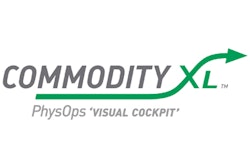
Predictive software is increasing its presence across a variety of industries, and agriculture is no different. Data-driven technology continues to revolutionize the way producers and feed suppliers operate their businesses and have potential to solve major pain points in supply chain operations.
As the U.S. Agency for International Development (USAID) said: “The spread of mobile technology, remote-sensing data, and distributed computing and storage capabilities are opening new opportunities to integrate smallholder farmers into the broader agrifood system. The scale of these changes holds out the potential for another agricultural revolution.”
What will drive this agriculture revolution? A new generation of leaders must be ready to manage and implement data-driven technology to address the challenges the industry is facing.
The state of the agrifood market
Mike Mossage, vice president, BinMaster, said the pandemic and rise of remote work greatly increased the need for technology, as employees and managers needed to stay connected, regardless of location.
Furthermore, recent economic headwinds and changes within the labor workforce led to the increased need for data-driven technology to address rising demands for productivity. With more baby boomers nearing retirement and the national unemployment rate around 4%, grain processors and feed manufacturers will have to find ways to utilize technology and respond to workforce challenges.
Artur Rdzanek, general product manager at Dodge Industrial, highlighted key challenges facing manufacturing industries around the globe.
“When you face labor shortages paired with the expectation to increase productivity, you have no choice but to consider predictive maintenance,” Rdzanek said.
As the agriculture industry looks for ways to address these employment challenges, there will be an increased need for technology solutions that can deliver necessary tools to seamlessly continue operations.
Workforce solutions are not the only benefit to integrating data-driven technology into the agrifood supply chain. Other upsides include:
Increased accuracy and productivity
In feed production, time is valuable, and lost time can result in significant profit disparities if efficiencies are not addressed.
As Rdzanek noted, if machinery frequently underperforms or unexpectedly breaks, feed producers could lose tens of thousands of dollars per hour. Data-driven technology provides users with predictive data that accurately addresses pain points and potential breakdowns so operators can make critical decisions to keep their operations up and running, reduce unplanned downtime and deliver quality products on time.
“In our case, data-driven technology optimizes the supply chain by delivering accurate bin, silo and tank inventories of raw products as well as finished goods,” Mossage said. “The accuracy piece is key as companies are able to optimize the amount of inventory they keep.”
Data-driven maintenance can minimize machine risks by pulling information from the system, evaluating the value chain, monitoring lead times and allowing businesses to foresee challenges that may be coming toward them.
Moves maintenance from reactive to proactive
When looking for ways to streamline production and maximize revenue growth, it is imperative that feed producers and grain processors take on a proactive mindset, anticipating how to address potential challenges before they arise.
Before integrating data-driven technology solutions, users must first ask, "What is my target?" A shift toward proactive thinking puts managers in the driver’s seat to identify potential weaknesses and minimizes room for inaccuracies.
Data-driven technology’s predictive nature alerts managers of maintenance issues before it’s too late. For example, Dodge’s OPTIFY condition monitoring platform uses cloud-based technology to give notifications and provide warnings on the decreasing health status of assets, allowing users to schedule maintenance before a problem occurs.
When looking for technology to monitor and impact the supply chain, seek out data-driven technology that is easy to integrate and allows users to reduce inefficiencies, improve reliability and operate safely.
Improved employee safety
Even as technology becomes more prevalent in industry production and important for supply chain success, employees remain the most important asset of every organization. It is imperative that feed mills use technological tools to protect the employees that continue to show up everyday, committed to driving results.
In many cases, production teams are exposed to dangerous conditions or challenging situations, such as employees working in higher temperatures or operating near rotating equipment.
Ultimately, "we want to protect our employees. We want them to start their shift Monday morning and go home safely at the end of the week,” said Rdzanek. “If you have the ability to remotely monitor your equipment, you are maximizing your resources to better protect your team and significantly improve your operations.”
Overcoming challenges of implementing data-driven technology
In the midst of the numerous benefits that come with predictive technology, users should still be prepared to face some challenges that come with implementation. Good tools are still merely tools — and come with a learning curve. That said, there are a few key ways to make sure predictive technology is integrated as seamlessly as possible.
First, set teams up for success with an integration plan. While much of this technology is cloud-driven and requires minimal IT support, there must be a team member ready and willing to shepherd the integration of the technology along. They must also be willing to address any data that delivers results contrary to assumptions that organizations have made about their operations.
Secondly, it is critical that the information given to technology is accurate, to avoid a "bad data in, bad data out" scenario. This can be challenging if organizations are not privy to adopting cultures where data is part of their daily operations.
“Provided that we have good data in, it can take time and a paradigm shift for the data to be trusted,” said Mossage.
This culture can more easily be adopted if data is slowly integrated into operations.
Lastly, predictive technology providers recommend starting small when it comes to identifying data solutions in feed agriculture.
“Do not wait for the perfect time,” said Rdzanek.
He recommended starting small by implementing this technology on a troublesome system, rather than reframing an entire maintenance structure at the forefront.
By identifying easy entries for addressing “troublemakers” in a chain of operations, it makes implementing predictive technology more intuitive and easier to scale when organizations are ready to do so.
Predictive data for agriculture’s future
If there is anything to learn from the technological solutions that are permeating the marketplace, their presence is not going away anytime soon. This is a good thing, considering the demand for data analysis will continue to be a crucial component of the agrifood supply chain.
“I think the next frontier is finding a 'one-stop shop’ for data analysis in hopes of continued supply chain optimization,” said Mossage. “There are many different technology platforms that lend themselves to specific links of the supply chain from farm to table. I believe we are headed toward all-encompassing data automation for the agrifood supply chain.”
Do not expect this to solve all problems immediately, however. Looking toward the future of a fully integrated supply chain, the best course of action for users is to look for ways to identify easy entry.
Simple, early implementation will set organizations up for success as the industry moves toward a future of predictive maintenance and more streamlined productivity. Data will continue to become more integrated, and it is imperative that agribusinesses do not hesitate to identify how it can solve their pain points.


















